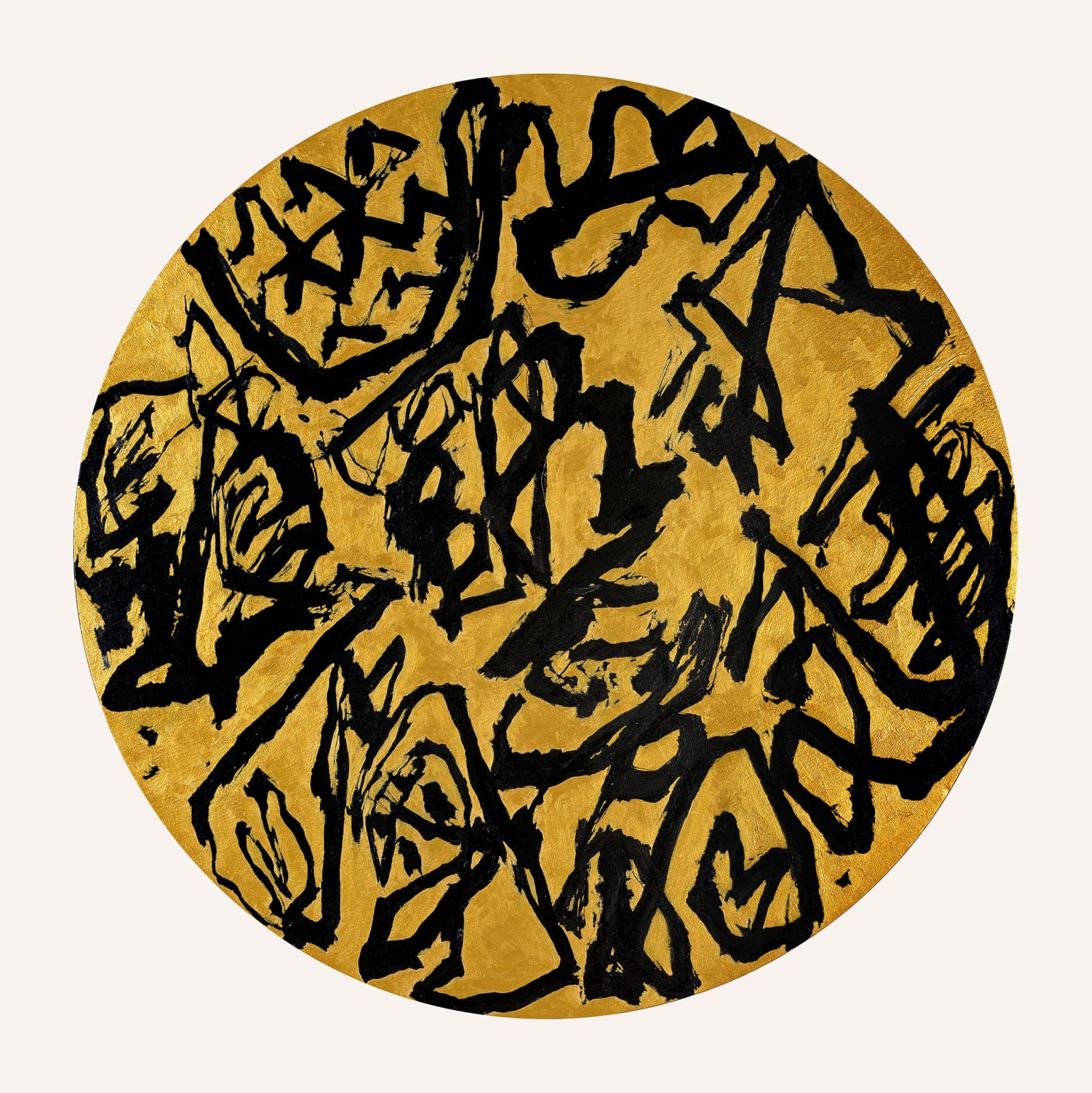Wei Ligang 魏立刚
A Temple Locked in Mist in a Frigid Valley 冰连溪谷祠锁烟, 2016
Ink and acrylic on canvas 墨 丙烯 布
47 1/4 x 47 1/4 in
120 x 120 cm
120 x 120 cm
Copyright The Artist
魏立刚,1964年生,山西省大同市人。现代派书法家、画家、篆刻家。1985年结业于天津南开大学数学系。《现代书法》杂志编委,“新干线抄龙”创始人之一。在近三十年的艺术探索中,魏立刚一直在打造一种基于汉字线条和空间结构的普世抽象语言。这种语言可以容纳人类当代知识和存在的复杂性和宽广性。他的“魏氏魔块”对汉字进行解构又融入图像元素,回溯象形文字本源,为中国当代艺术中最早的个人视觉语言之一。他把明末清初山西书法家傅山(1607-1684)的连绵术融入篆、隶、甲骨文等金石文字,构造出金石连绵草、叠影草书、金墨大草等丰富的艺术形式。此外,魏立刚亦有各种饱含书法意味的绘画作品。魏立刚的艺术表达是理性与感知,精致与飘渺以及异域、寻常与自然之间的独特结合。他从古埃及文字、工业文明、欧洲城堡和皇宫、当代物理学和天文学、动植物结构中寻找灵感,并融入各种奇幻的想象之物。他喜用金、红、蓝等华丽色彩,并用丙烯颜料制造出肌理的厚重感,有异于黑白色调、清逸和流畅的传统书法。 冰连溪谷祠锁烟 Ice Connect River Valley Shrine Lock Mist 'A Shrine Shrouded in Mist in a Frozen River Valley' -- This seems to be a combination of two poetic fragments...
魏立刚,1964年生,山西省大同市人。现代派书法家、画家、篆刻家。1985年结业于天津南开大学数学系。《现代书法》杂志编委,“新干线抄龙”创始人之一。在近三十年的艺术探索中,魏立刚一直在打造一种基于汉字线条和空间结构的普世抽象语言。这种语言可以容纳人类当代知识和存在的复杂性和宽广性。他的“魏氏魔块”对汉字进行解构又融入图像元素,回溯象形文字本源,为中国当代艺术中最早的个人视觉语言之一。他把明末清初山西书法家傅山(1607-1684)的连绵术融入篆、隶、甲骨文等金石文字,构造出金石连绵草、叠影草书、金墨大草等丰富的艺术形式。此外,魏立刚亦有各种饱含书法意味的绘画作品。魏立刚的艺术表达是理性与感知,精致与飘渺以及异域、寻常与自然之间的独特结合。他从古埃及文字、工业文明、欧洲城堡和皇宫、当代物理学和天文学、动植物结构中寻找灵感,并融入各种奇幻的想象之物。他喜用金、红、蓝等华丽色彩,并用丙烯颜料制造出肌理的厚重感,有异于黑白色调、清逸和流畅的传统书法。
冰连溪谷祠锁烟 Ice Connect River Valley Shrine Lock Mist
"A Shrine Shrouded in Mist in a Frozen River Valley"
-- This seems to be a combination of two poetic fragments rather than a quotation. The first four characters create an image of a river valley completely frozen, the last three characters an image of a shrine or temple "locked" by bands of mist. For me an image of quietude and reclusion, and more working in contrast to the calligraphy than in resonance. But the paradox of a metal "lock" and soft bands of mist shares the calligraphy's ambiguities between soft and hard, fluent and monumental, etc.
冰连溪谷祠锁烟 Ice Connect River Valley Shrine Lock Mist
"A Shrine Shrouded in Mist in a Frozen River Valley"
-- This seems to be a combination of two poetic fragments rather than a quotation. The first four characters create an image of a river valley completely frozen, the last three characters an image of a shrine or temple "locked" by bands of mist. For me an image of quietude and reclusion, and more working in contrast to the calligraphy than in resonance. But the paradox of a metal "lock" and soft bands of mist shares the calligraphy's ambiguities between soft and hard, fluent and monumental, etc.
1
of
9

